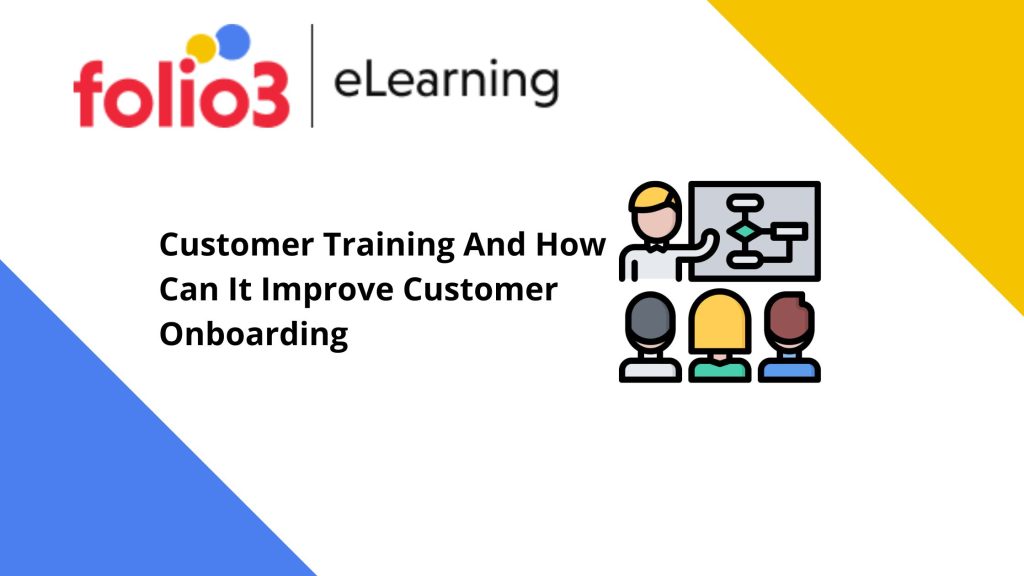
Your customers’ satisfaction with their onboarding process will reassure them that they chose wisely. In the end, it also aids in keeping them. Customers typically leave for two reasons:
- They don’t comprehend your product, and
- They don’t see any value in it.
Both of these problems can be resolved by customer onboarding.
There is no doubt that the product you made for your customers was fantastic. Customers need some assistance getting started. The good news is that your customers already trust and like you and your product since they bought it. You have to make sure it stays that way.

Executive Summary
Today’s article explores customer training and how it improves the customer onboarding program. Programs for teaching customers emphasize product usability and good word of mouth. Customer training is now widely used across all businesses. Customer training’s ability to improve customer satisfaction and chances for repeat business is the main factor behind this increase.
What Is Customer Training?
Customer training, a component of extended enterprise enablement, is the act of teaching your clients how to use your goods or services effectively to achieve their objectives. Practically speaking, it entails giving customers the educational resources and information they require to succeed and address the business challenges of their organization.
- Goals Of Customer Training
Customer education has three objectives:
- At every point of the client lifecycle, attract and keep customers.
- Enhance the experience of your clients by offering them valuable training
- Increase the effect of your product or service on your clients’ businesses.
Customer training is not a one-size-fits-all strategy because it might imply different things to different businesses.
Why Is Customer Education Important?
Both team training and customer training are crucial. To enhance client onboarding, every business should implement continuous customer education for the reasons listed below:
- Increases The Buzz
A trustworthy way to announce and talk about new product features that excite consumer attention is through consumer education. They become less hesitant as a result and are willing to dive right in to find out more.
- Decimate Support Expenses
Less one-on-one help means there are more resources for client training. Customers get 24/7 access to videos, tutorials, and instructions to assist them in resolving common problems and enhancing the operation of products.
- Boost Customer Confidence
Customers will know your service or product will live up to expectations if you have an intuitive customer training program. Additionally, you provide them with all the knowledge and direction they require to make an educated purchasing decision.
How Can Customer Onboarding Be Improved?
Before starting your onboarding program, develop a training strategy with precise objectives. Unsurprisingly, most profitable businesses employ learning management systems (LMS) to speed up customer onboarding and provide ongoing product education.
A software platform known as an LMS enables the creation, distribution, and tracking of training for partners, clients, and workers on a global level. Marketers and Customer Experience specialists can create a personalized and user-friendly customer education site to give interesting learning materials. This then personalizes the learning process and provides thorough analytics.
These services act as a central knowledge repository where all of your training materials are accessible to your clients. Customers can now easily access on-demand training materials and convenient support tools thanks to the implementation of an LMS. A Learning Management System’s ability to quickly provide and update learning content is an additional benefit. As a result, it is simpler to release new product features and specifications and UI upgrades fast.
Best Practices Of Customer Onboarding Process
You can create a great onboarding experience using the finest customer onboarding methods. Every point of interaction with your clients will be needed for the information in the following tips.
- Celebrating Customers
Knowing your buyer persona inside and out will inevitably lead to understanding your consumer. Make it a point to comprehend each distinct issue, pain point, hurdle your client experiences, and what they would like to achieve in the end. You may adjust their onboarding process and objectives using this information.
- Try To Entice
Every time you connect with a customer, your aim should be to replicate the satisfying experience that prompted them to sign up for your service in the first place. Aim to provide a fantastic performance that your clients will gush over and spread to others.
- Analyze Your Progress
Both your consumer and your business gain from onboarding. Collect customer feedback, pinpoint friction areas, and monitor critical data to find out what’s working and where to make improvements.
- Keep In Touch
Following your initial welcome email, keep using email to supplement any in-app training and guides throughout the onboarding process. Email is currently the preferred method of communication for your customers.
- Make Customer-Focused Objectives
Goals and measurements for your customer will be particular to their circumstance. Permit them to define success, then assist them in setting attainable goals and benchmarks to meet along the way.
- Clarify Expectations
You should outline the requirements for employing the product in your sales process. This procedure needs to continue during the onboarding procedure as you remind your consumers of the benefits of your product and have them ready for any potential hiccups or sticky points.
- Show Worth
Before the new customer becomes enthusiastic, you must again emphasize the value it will bring to their particular circumstance. Give them precise illustrations of how your product will help them with their problems.
Useful Customer Onboarding Tips
In addition to recommended practices, a few factors will make your onboarding procedure satisfying for your clients.
- Tailored Experience
Every customer has a different set of worries. Gaining success — and devoted consumers — will be simpler to attain the more you can customize your product to meet their needs.
- Disseminate Information
Send out information gradually and with care. Give specific instructions on completing each task you assign a new user, and only ask them to complete one at a time.
- Strong Customer Services
Follow your consumers’ lead at all times. By maintaining a devoted customer support crew, you can be there for your clients if they run into issues.
- Celebrate Small Wins
Recognize each step toward success as defined by the client to promote a lasting relationship.
Conclusion
Giving customer onboarding the attention it requires is crucial for customer retention. By adhering to these best practices, you can design an effective onboarding procedure that will make new customers feel accepted and connected with your product or service.

FAQs
Metrics for customer engagement and retention can be monitored to gauge how effectively your onboarding procedure is performing. Depending on feedback and data, adjust as necessary.
Online customer help and guidance is a procedure known as digital customer onboarding. With more businesses moving their operations online, it’s becoming more and more typical. Customer support that is delivered swiftly and effectively can be achieved through digital customer onboarding.









